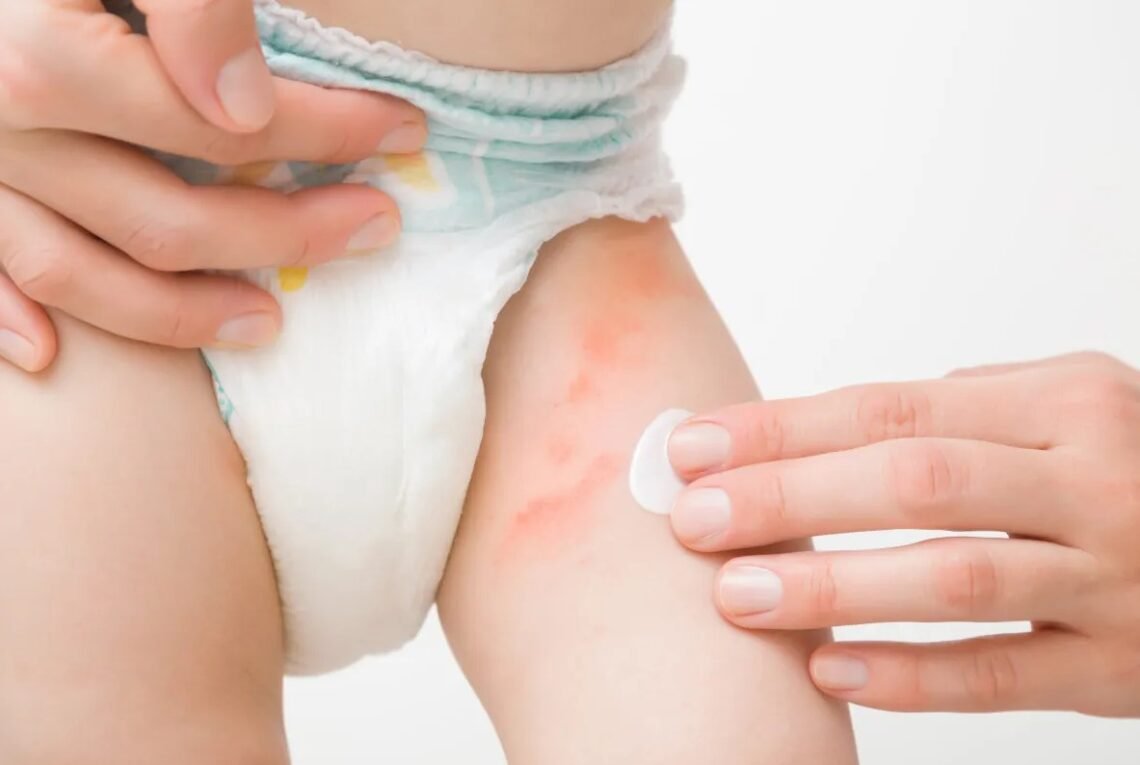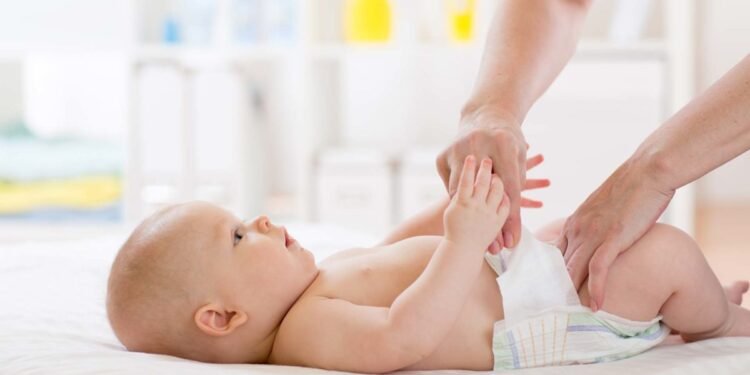There are many small moments, apparently insignificant but in reality very important, that marks the day of the baby and of those who take care of him. One of these is the diaper change, a gesture which, although often becoming automatic in a short time, always deserves attention, care, and dedication.
To respect the delicacy of an area that is easily irritated and red, but also to create a bond of trust with the little one, precious for healthy growth. It may seem difficult at first and the diapers thrown away are countless. But with a little experience, the change will proceed smoothly and smoothly. Here’s how to proceed with the diaper change.
How To Make Diaper Changing Pleasant?

Before being pleasant, the diaper change must be safe. This is why the baby should never be left alone, not even for a moment when changing it. This is why at home, where the change is usually carried out more frequently, it is good to equip an area where there is everything you need.
First of all, the diapers, of which it is always good to stock up in order not to run out of “raw material”, but also the washing tub, a sponge, detergent, a soft cloth, the paste for changing, and even some little game to distract the baby.
It is essential to change the baby on the changing table or on a flat and stable surface, such as the bed. In any case, it is better to cover the surface with a special cloth with an absorbent action or with a soft towel.
How Often Do You Change Your Baby’s Nappy?
Diaper changes should be done often so that the baby’s delicate skin does not stay in contact with pee and feces for too long, which can cause annoying diaper rash: a rash around the genitals, on the bottom. and on the thighs.
The ideal would be to change the baby after each feed and always when the baby pees or poops; Since humidity does not bother most babies, it is useless to expect a cry or a sign of discomfort from the newborn: better check every two hours with a finger to check if the diaper is wet and dirty.
The bottom is a delicate part, to be washed at each diaper change to keep the skin in balance and avoid irritation and redness. This simple gesture can be done with a baby wipe or with a cotton swab moistened with warm water. You can also run the bottom under running water, making sure it is not too hot.
- In girls: the movement of the hand must always go from front to back to avoid carrying fecal germs in the genital area. The vulvar area should also be cleansed, between the labia majora and labia minora.
- In males: it is good to wash only the external area of the penis, which is still covered by a thin skin (foreskin). In older children, you can gently lower the foreskin and also wash the tip of the penis to remove any deposits of smegma (a substance secreted by the genitals, mixed with skin cells, sebum, and moist materials from the urine).
How To Avoid Diaper Rash?
Redness is very frequent in the diaper area, where the delicate skin of the newborn is in contact with particularly irritating agents such as urine and feces. It is no coincidence that we speak of “diaper rash”, a problem that is not serious but must be treated immediately, because – if neglected – it can give rise to the appearance of painful blisters and ulcerations.
Always Dry And Clean
The best form of prevention and the correct remedy for diaper rash is to change the diaper often and always clean it thoroughly at each change.
Rice Starch Or Colloidal Oats
If the redness is already present, it is best to use rice starch or colloidal oats for washing the area which will help soothe the irritation and ease the itching. If, however, after three days dermatitis worsens instead of improving, blisters and lesions, papules and crusts appear, it is necessary to take the baby to the pediatrician.
The Protective Barrier
Apply to the diaper area a thin layer of anti-redness cream based on zinc oxide, a substance that works as a sort of barrier: it adheres to the skin creating a protective, tenacious, and long-lasting film, able to isolate the skin from the external environment and specifically from irritants such as pee and feces.
As an alternative to zinc oxide, which also has a healing and slightly purifying action, soothing and softening calendula ointments can be used; pure shea butter is also excellent to soften between the fingers before applying it. Finally, as soon as possible, the baby should be left with the bottom uncovered for a few minutes because the “skin in freedom” is essential to prevent redness.
What To Put On Diaper Rash?

The baby’s skin is very delicate and in some cases – for example, in the presence of a tendency to atopy – it is also dry and hyper-reactive. The moment of change, therefore, requires scrupulous attention in the choice of the products used.
Therefore, you should never wash the bottom with detergents for the intimate hygiene of mum and dad which, although delicate, do not meet the needs of the baby, and even less with shower gel and soap, too aggressive and irritating for him. Particular attention should be paid to the pH: in baby cosmetics, it is generally neutral for a delicate washing action that respects the fragile skin balance of the little ones.
Read More: How Do You Give Your Baby The First Bath?











